Milan’s Salone del Mobile, the world’s premier event for design, is celebrating its 62nd iteration this year. As a major platform for launching new creations internationally, the trade fair and its accompanying SaloneSatellite exhibition of up-and-coming talent always attracts a pool of talented Japanese designers.
Here are a few standouts at the main Rho Fiera venue, along with others selected from related Milan Design Week Fuorisalone events.
Rho Fiera stars
Japanese newcomers to Salone del Mobile’s exhibition hall in the Rho Fiera exhibition complex include furniture makers Adal and Nagano, both of whom have graduated from shows at Fuorisalone events in previous years.
Design brand Adal is presenting Look into Nature, its sustainable furniture brand produced with domestically sourced igusa (Japanese rush grass), an industry that has shrunk to less than a 10th of its size in the past decade. Traditionally used by tatami manufacturers, igusa is reimagined into a flexible textile for chair backrests, decorative panels of coffee tables, minimalist room screens and abstract wall art — all aesthetically inspired by the shapes and forms of Japanese landscapes.
Likewise, Nagano Interior focuses on material, this time solid wood. Its Think Basic series is simply by design, emphasizing grain and texture in works that are impeccably hand-finished in natural tones.
Showing for its second time at Rho Fiera is Daft about Draft, a brand of plush furnishings and sleek tables creatively directed by Taiju Yamashita. Curved forms, soft textiles and dusky tones dominate with a focus on velvety textures, dark woods and brushed metals. An architect and interior and product designer, Yamashita envisions furniture as a form of expression, drawing inspiration from design’s ability to tell a story and create new personal ones through user experience. Sixteen works are on display in 2024, with six being presented in Milan for the first time.
This year marks Karimoku Furniture’s largest Milan showing to date, with four of its brands exhibiting, each at a different venue. For Rho Fiera, it presents Karimoku Case, a series of works developed with renowned designers for specific architectural projects. Curated by Norm Architects and Keiji Ashizawa, and housed in a space of over 160 square meters, the exhibition introduces new furniture designed by Norm Architects and Ashizawa for Case 09 “Bellustar Tokyo” hotel and by Ashizawa for the Case 10 “Azabu Hills Residence” complex. Items include comfy, curvilinear pieces in subdued hues and the Case series’ first works featuring the warm, lighter shades of locally sourced keyaki (zelkova) wood.
For Karimoku’s Fuorisalone events, all taking place in Milan’s Tortona district, the international collaboration brand Karimoku New Standard makes its first appearance in five years with an installation styled by Connie Husser and creatively directed by David Glaettli. Karimoku’s work with Zaha Hadid Design also returns with new pieces of its architecturally inspired Seyun lineup. New to Fuorisalone is Mas, Karimoku’s all-wood furniture brand named after both masu, a traditional hinoki (Japanese cypress) square cup used for sake, and a play on the term “mass production.” Designed by Wataru Kumano, Ville Kokkonen and Daniel Rybakken, Mas includes clean-lined chairs, benches, stools and tables, all made from Japanese coniferous woods and detailed with unique joinery and woodworking techniques.
SaloneSatellite experimenters
Young Japanese designers (age 35 and under) at SaloneSatellite include Hana Mitsui, who rethinks traditional textile production with an eye to recycling its waste materials. Her installation, “Visual Illusion,” at SaloneSatellite includes her latest work, “Blurring Checker,” a hazy, checked fabric inspired by inevitable tiny errors that occasionally occur when producing kasuri textiles.
Kasuri involves weaving independently dyed warp and weft threads to create patterns. Working with Shimogawa Textile, Mitsui purposely manipulates the misalignment of such threads to create the illusion of softly blurred checks and other vivid, contemporary designs.
Product designer Kodai Iwamoto describes his process as a dialogue with materials to find, highlight and utilize their intrinsic qualities. Using self-taught techniques, including metalworking and wood carving, he creates every work by hand. Among his new pieces for SaloneSatellite are two new lighting works: the Komoru circular wall lamp, made with non-woven fabric, wood and stainless steel; and the striking Arrow Stand Lamp, which mysteriously emanates light from behind for an atmospheric glow.
Fuorisalone innovators
Outside of Salone del Mobile, the week’s Fuorisalone events include several showcasing Japanese innovations both legendary and new.
Curated by Rossella Menegazzo, a researcher of Japanese history and culture, “Origin of Simplicity. 20 Visions of Japanese Design” at the ADI Design Museum explores the concept of simplicity and its philosophical interpretations — emptiness, space, silence, aging and imperfection. More than 150 works from the 1960s to today will be brought together in a space designed by renowned architect Kenya Hara.
Hara envisioned the exhibition as a forest walk, using multilevel shelves like the boughs of trees to display objects. Works are grouped by form, material, texture, craft and more, and include design classics, from Sori Yanagi’s bentwood Butterfly Stool and Issey Miyake’s collaboration with graphic designer Ikko Tanaka, to recent creations, such as Daisuke Yamamoto’s reclaimed construction-steel armchair and bamboo artisan Youna Ichikawa’s modern artwork.
Designs on Isola
With the addition of new venues in Milan’s Isola district, the Isola Design Festival’s eighth edition has an impressive three exhibitions involving Japanese creators. Yu Watanabe joins four international designers at the main location, an underground car park, for “Disclosure: Design Studios Unveiled.” As the title suggests, Watanabe transforms his space into an atelier, presenting his material explorations and design process. Visitors will also see his unusual elongated pendant lamps, which utilize the luster of urushi (Japanese lacquer) to disperse light.
Multidisciplinary collaborative initiative Shinkogeisha’s “New Craft” exhibition proposes that design, engineering and technological advances can be combined into a contemporary craft form. Items on display include Nosemono — 3D-printed tape dispensers and other desk items seamlessly attached to natural rocks and branches to create functional goods — and Tilde’s knit-textured, 3D-printed portable radios and clocks.
Arakawa Grip, a manufacturer of wire cable grippers, will be presenting its third exhibition. A total of 16 Japanese designers will come together for three showcases. “Biblioteca d’oro by Arakawa Grip” celebrates the brand’s 50th anniversary with Kaori Akiyama’s installation of the company’s brand book suspended on Arakawa Grip cable grippers. “Composition by Kairi Eguchi” introduces seven designers' furniture works utilizing Arakawa Grip, and “New Normal Standard 4,” a project supported by Arakawa Grip, presents homeware products developed by young generations of designers.
Honorable mentions
Wonderpowder, Design studio We+’s collaboration with Shimadzu, a manufacturer and supplier of precision instruments for various industries, explores the design potential of powder as a material. An unusual experimental project, We+ used Shimadzu equipment designed for the medical and health care fields to scientifically analyze different powdered materials and their movements when suspended in water. The research and results are presented at Milan’s Dropcity Center for Architecture and Design in the form of a colorful, informative and interactive installation.
After years of research and development, Majotae, a textile brand creatively directed by Teruhiro Yanagihara Studio, launches its first collection at the Secci Milano gallery. With the help of modern technology, Majotae revives taima-fu, a rarely produced, extra-fine hemp fabric that dates back to at least the Edo Period (1603-1868). Majotae 9490 is a collection of naturally dyed bedding with hemp textile fibers that soften with use and age.The number in the collection’s title alludes to the number of days a person spends sleeping in a lifetime.















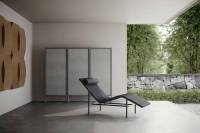

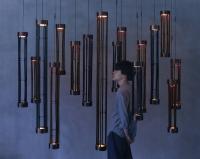
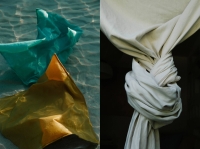




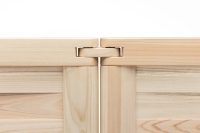
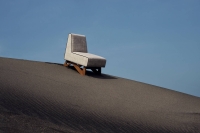
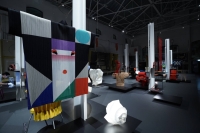















With your current subscription plan you can comment on stories. However, before writing your first comment, please create a display name in the Profile section of your subscriber account page.